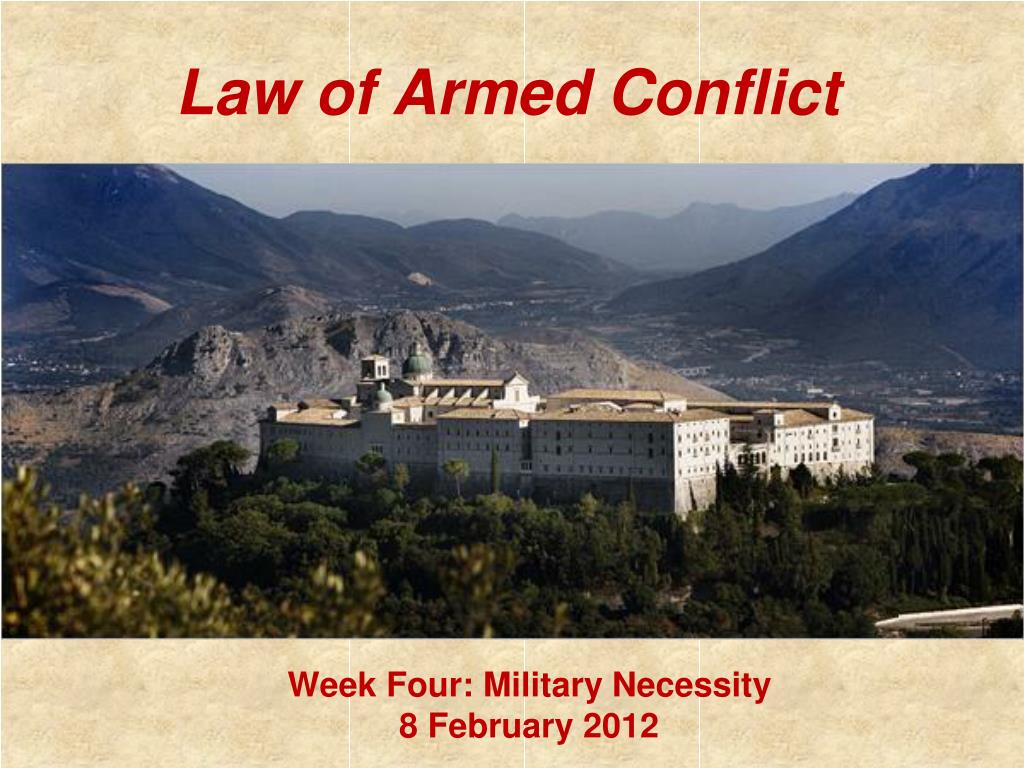

Army Field Manual FM27-10: Law of Land Warfare (July 1956),, Paragraph 41.

DISTINCTION: Protocol Additional to the Geneva Conventions of 12 August 1949, and relating to the Protection of Victims of International Armed Conflicts (Protocol I), 8 June 1977, Article 48.(4) Unnecessary Suffering – “It is prohibited to employ weapons, projectiles and materials and methods of warfare of a nature to cause superfluous injury or unnecessary suffering.” **Protects Combatants** The Liber Code defines the prohibited activity as, “in general, … any act of hostility that make the return to peace unnecessarily difficult.

The principal of military necessity prohibits things such as wounding or permanently injuring an opponent except during the fight, torture to exact confessions and other activities simply used to inflict additional damage on the enemy that does not further the military objective. (3) Military Necessity– “…very injury done to the enemy, even though permitted by the rules, is excusable only so far as it is absolutely necessary everything beyond that is criminal.” – Napoleon. This principle brings with it an obligation to consider all options when making targeting decisions: verify the target, timing (is there a time when fewer civilians will be around?), weapons used, warnings and evacuations for civilian populations. Proportionality is not a requirement if the target is purely military. This means that when considering a target the damage to civilians and their property cannot be excessive in relation to the military advantage gained. The key here is the word incidental, meaning outside of the military target. (2) Proportionality – “Loss of life and damage to property incidental to attacks must not be excessive in relation to the concrete and direct military advantage expected to be gained.”. This does not mean that civilians cannot be legally harmed or killed under the law only that civilians and civilian property should not be the object or the purpose of the attack. (1) Distinction– “In order to ensure respect for and protection of the civilian population and civilian objects, the Parties to the conflict shall at all times distinguish between the civilian population and combatants and between civilian objects and military objectives and accordingly shall direct their operations only against military objectives.” The only legitimate object of attack in an armed conflict is military personnel or property.


 0 kommentar(er)
0 kommentar(er)
